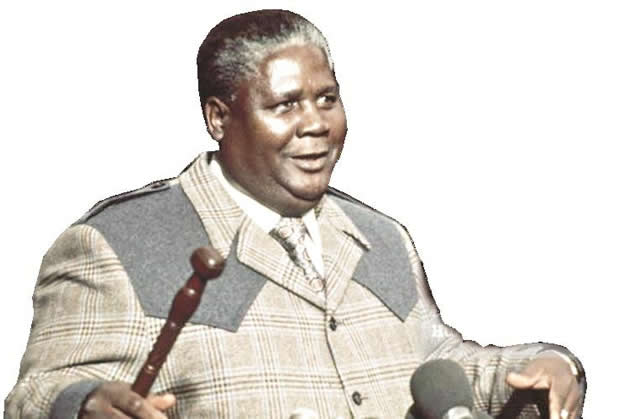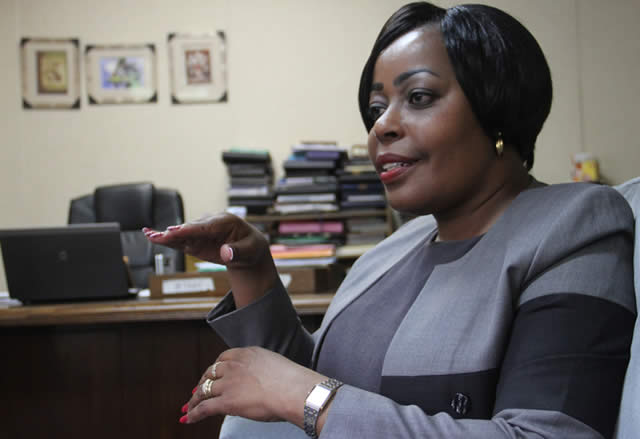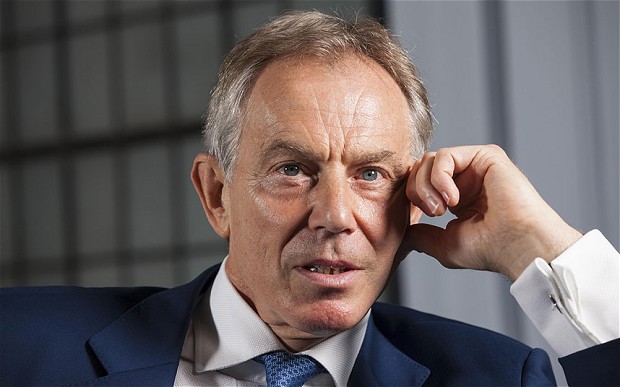Dr JM Nkomo: His life, legacy

Saul Gwakuba Ndlovu
LAST Friday’s celebrations of the 17th anniversary of the death of Joshua Mqabuko Nyongolo Nkomo were one of the national occasions where many Zimbabweans looked at their country’s past with deep admiration of what and how the country’s black people achieved politically under his leadership.
Some remembered him by his famous advice about how to make money, (imali in SiNdebele). He reportedly urged Zimbabweans to till the land, (uku) lima in SiNdebele, the word “lima” being the reverse of “imali” (money).
He would advise people to reverse the word “mali” to “lima” in order to make money. He said this whenever he was emphasising the importance of land to Zimbabweans.
Yet some, especially students of Zimbabwe socio – cultural history, saw and celebrated the occasion as honouring a man who represented an era of Zimbabwe’s history overall.
Joshua Nkomo initially appeared on the socio-political scene of Southern Rhodesia in 1950 when he and five other colleagues namely Jason Ziyaphapha Moyo, Sikhwili Khohli Moyo, William Mpotshi, Grey Bango and Knight Khuphe went to the Dulamwali shrine to consult the oracle about how to free this country.
The late vice president then later became the secretary -general of the (Rhodesia) Railways African Workers’ Union (RAWU) whose president was Aaron Ndabambi.
However, he really burst onto the country’s political stage in 1952 when he was officially asked by the then Southern Rhodesian Prime Minister, Sir Godfrey Huggins, to be one of two Africans to represent African opinion at a London conference on a proposal to form a central African federation comprising Southern Rhodesia (Zimbabwe), Northern Rhodesia (Zambia) and Nyasaland (Malawi).
Each of those countries’ black communities were “represented” by two prominent black personalities. The other Southern Rhodesian black personality was a well-known journalist, Jasper Zingeza Savanhu.
At that conference, Nkomo strongly proposed that the black people of the three territories should be consulted through referenda for that federation to have a semblance of legitimacy.
His proposal reflected how he respected the people’s opinion. Nkomo was a strong believer in the well-known political philosophy that governments are products of people’s wishes and that no government should try to ride rough shod over the opinion of the people.
He was also an irrevocable believer in human equality, that is to say that he strongly maintained that human rights were for every human being, and that the only qualification for one to enjoy human rights was to be human.
The London conference on the federation did not make much sense to most black people at that time.
The issue was made more confusing and complicated by another suggestion that called for amalgamation instead of federation.
Nkomo explained the difference at a series of meetings at Makokoba’s Stanley Hall (Bulawayo) before the federation was inaugurated in September 12, 1953.
Sir Godfrey Huggins became its first prime minister and he was succeeded by Garfield Todd.
Nkomo had campaigned for a seat in the Federal House but had lost to Mike Masotsha Hove who became a federal MP representing Matabeleland. Savanhu represented Mashonaland and Manicaland.
At one of the Stanley Hall meetings, Nkomo told the audience that the federation would enable Southern Rhodesian industrialists to export their products and services duty-free to Nyasaland (now Malawi) and Northern Rhodesia (now Zambia). Industrialists were only white people.
He said the industrialists would import cheap labour from those two northern countries, an advantage to the industrialists in that workers from outside Southern Rhodesia would feel too insecure to go on strike for better working conditions and higher wages or salaries.
The federation would thus benefit Southern Rhodesian industrialists to the expense of the indigenous black workers economically as well as politically in that they could not use labour action to force their employers to improve their lot.
Nkomo said the black people of Nyasaland and Northern Rhodesia would be exploited more and more as a result of the Federation’s skewed economic development policies that treated the two northern territories as sources of cheap raw materials and labour.
His explanation was opposed by some of the people, in particular those who saw political saviours in some white people such as Garfield Todd and Rev Percy Ibboston (Wesleyan Methodist).
There were at that time quite a few black people who strongly felt that white settlers were unconquerable, vital, and incomparable to black people as political, social, cultural or economic leaders. Holding that opinion in Bulawayo was David Masunda whose view was that Southern Rhodesian white people were sent by God.
Those and some who said that Joshua Nkomo could not retake the country from the white settlers because he belonged to an inferior tribe were sooner than later silenced by the massive support he commanded throughout the country.
We can rightly say that from 1959 up to 1980 Joshua Nkomo became the (and not a) political deciding factor in the liberation of this country. That was doubtlessly the “Nkomo Era” in socio-political terms.
Having injected courage among the black people, his supporters confronted racial discrimination in hotels, at municipal swimming pools, in commercial shops, on passenger trains and buses, at post offices, churches, public toilets and everywhere else where services were given on racially discriminatory grounds.
Black people in some urban centres organised themselves into groups and defiantly broke the colour bar at various places. They seized their rights.
In 1961, Nkomo led an all-black delegation to London to the first Southern Rhodesian multi-racial constitutional conference. The other members of his delegation were Reverend Ndabaningi Sithole, Advocate Herbert Chitepo, Taracissius George Silundika, and Advocate Enock Dumbutshena.
It is important to state here that Nkomo and his delegation were told about that conference by the Southern Rhodesia Government (led then by Sir Edgar Whitehead) and not by the colonial authority, the British Government.
Why? Because by that time Britain maintained that matters affecting the black people of Southern Rhodesia were called “internal affairs” of this country, now Zimbabwe, in which it could not interfere in recognition of a convention between the two countries.
So, Nkomo was informed about the conference, instead of being officially invited, by the Sir Edgar Whitehead administration.
That conference granted the black majority of this country only 15 parliamentary seats and just about 250,000 white people 50 seats. There were not less than 4,500,000 black people in this country.
Nkomo and his delegation rejected that blatantly anti – African constitutional insult.
In a later private conversation in London between a British newspaper journalist on one side and Chitepo and Silundika on the other, the two Zimbabwean leaders casually remarked that the 15 seats were better than nothing in view of the historical fact that the Southern Rhodesian black community had never been represented in parliament.
The journalist published that casual private personal view, and the London-based ZAPU representative Leopold Takawira sent a cable to a Salisbury (Harare) print media house saying Nkomo had accepted the constitutional proposals. The cable strongly condemned what he termed Joshua Nkomo’s treachery and betrayal of the people of Zimbabwe.
It took a great deal of explanation before the truth was later known.
The acrimonious issue was finally cleared after Sir Edgar Whitehead had in 1963 implied that Nkomo had accepted that constitution. Nkomo publicly challenged him to explain why his delegation had walked out of the conference hall in protest if it had accepted that constitution.
He challenged Sir Edgar to produce a copy of that document with his (Nkomo’s) signature. Sir Edgar then and only then publicly stated that Nkomo had, in fact, rejected that constitution.
The author of this article was then the features and readers’ views editor of the Daily News, and he published Sir Edgar’s apology to Nkomo.
By then (1963), 14 black MPs and one white man, Arhn Palley, represented the 15 black constituencies in the Southern Rhodesian Parliament.
The 14 Africans were members of Sir Edgar Whitehead’s United Federal Party (UFP) Palley was an independent.
It was most ironic that the 14 would criticise and demonise Nkomo in the House instead of thanking him for having fearlessly campaigned for the political empowerment of the Africans, resulting in the 15 parliamentary seats that they (the black UFP MPs) occupied.
ZAPU deeply despised them, and publicly called them “UFP” stooges, white settlers’ poodles, zvimbwasungata zvevarungu”. On several occasions that vilification and denigration became physical when some ZAPU activists assaulted some of those pitiable black people.
In Salisbury (Harare) one of those black UFP MPs, Patrick Rubatika, would literally always leave the Federal Hotel bar every evening with a bloody nose, an ugly swollen fat lip and a black eye after he was head-butted by Peter Mutandwa, the ZAPU Salisbury Provincial organising secretary at that time.
He would cry like a baby, as he accused what he called “Joshua Nkomo’s youths” of thuggery. Incidentally, Rubatika was a former school teacher, and had earlier taught with Robert Mugabe at Hope Fountain Teachers’ Training Institution sometime between 1946 and 1949.
Peter Mutandwa later joined ZANU. He died in Zambia in the early 1970s.
He had joined ZANU following concerted criticism of Nkomo’s leadership by some of his senior colleagues who later formed ZANU in August 1963.
However, it appeared that the more he was criticised, the more the black people supported him.
He was then the head of the People’s Caretaker Council (PCC) founded at Cold Comfort Farm in August 1963.
The PCC was, in effect ZAPU by another name, a tactic to defy the 1962 banning of that party. Joshua Nkomo was in early 1964 banned from the Salisbury magisterial area by the Rhodesian Front regime whose Minister if Law and Order was by then Walter Clifford Dupont.
Nkomo was escorted along the Salisbury-Bulawayo road by a police vehicle and left at a spot about 30km along that highway. With him was one of his most staunch lieutenants, Stanslaus Marembo, with whom he was later restricted to Gonakudzingwa in April 1964.
His long stay in restriction and detention, at times at Gonakudzingwa and at times at Gweru or at Buffalo Range prison, lasted from April 1964 to December 1974, a period of 10 years and about eight months.
Attempts were made to resolve the impasse during that time. They ranged from talks between Britain and the Rhodesian Front’s Ian Douglas Smith aboard, first, the British frigate Tiger, and later aboard the Fearless.
They failed mainly because the black people’s voice was not represented. Several British envoys later came to Rhodesia but went back empty-handed because African leaders were not freely allowed to present their case.
The 1972 Pearce Commission appointed by Britain to test African opinion on constitutional proposals worked out by Britain’s Sir Alec Douglas-Home and Ian Smith was rudely shocked by the overwhelming rejection of the document by the black masses.
The black people were organised by Bishop Abel Muzorewa who had been requested to do so by Nkomo.
Nkomo’s release from Gonakudzingwa on December 4, 1974 was the beginning of the last stage of the country’s liberation struggle. It culminated in the November -December 1979 Lancaster House constitutional conference which agreed on a document upon which an independent nation of Zimbabwe was born on April 18, 1980, some 16 years after Joshua Nkomo was rusticated at the oppressively hot Gonakudzingwa Camp in Zimbabwe’s remote south-eastern low veld region.
Saul Gwakuba Ndlovu is a retired, Bulawayo – based journalist. He can be contacted on cell 0734 328 136 or through email. [email protected]









Comments